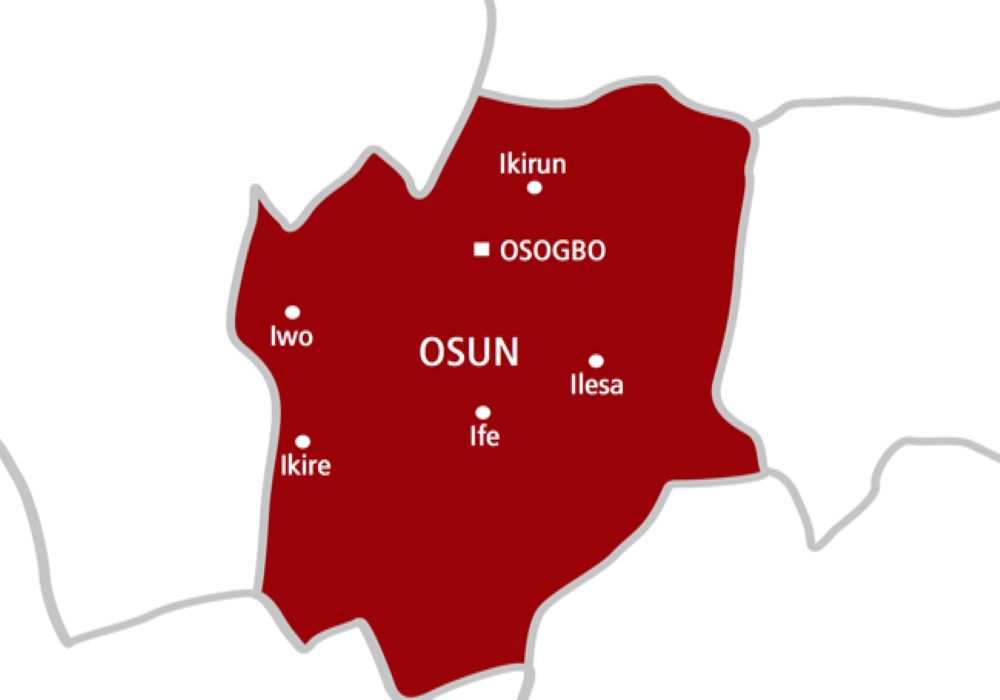Other News
Senegal nears first victory in war on tsetse fly

…FAO/IAEA project lays foundation for thriving livestock sector
ROME – A campaign against the tsetse fly, a pest that transmits a disease that devastates livestock, in the Niayes area near the capital Dakar has radically reduced the fly population and is paving the way for complete eradication.
“Since the project started, there is already less disease. It has not only reduced the tsetse but also ticks, which cause lots of other diseases in the area. We have noticed over all better health of the herds,” said Baba Sall, project manager and Head of the Animal Health Section in the Ministry of Livestock.
A multiyear programme of the Government of Senegal, with financial help from the United States and technical support from the Centre de Coopération Internationale en Recherche Agronomique pour le Développement (CIRAD), France, is slowly eradicating the tsetse fly using a method called the Sterile Insect Technique. The programme is supported by FAO through its joint division with the International Atomic Energy Agency in Vienna.
The Niayes area has a coastal micro-climate suitable for exotic breeds of cattle, the kind that produces more milk and meat than domestic stock.
Unfortunately, the area is also home to the tsetse fly, which transmits trypanosomosis. Often lethal, the disease reduces fertility, weight gain, meat and milk production and makes the cattle too weak to be used for ploughing or transport.
A government study estimates that when the tsetse fly is completely eradicated in the Niayes farmers will earn €1.2 million ($1.6 million) more per year because they will spend less on treating animals and earn more profit from selling milk and meat.
The government has an ambitious plan to introduce exotic livestock breeds and create a modern meat and dairy sector in the area, which is near the capital Dakar.
In-depth look at the campaign
The Sterile Insect Technique is a form of pest control that uses radiation to sterilize male flies that are mass-produced in special rearing facilities. The sterile males are released systematically by air on a sustained and area-wide basis over tsetse-infested areas, where they mate with wild females. These do not produce offspring and, as a result, this technique can eventually eradicate populations of wild flies.
Before the SIT can be used, the wild fly population needs to be suppressed to very low levels using other control methods. In the Senegal project area, this was achieved through applying pesticide directly to livestock, the use of fly traps and netted fences around pig pens.
Ground release of sterile males flies started in 2012 and air release in 2013 after three years of feasibility assessments, capacity building, preparation and testing.
After six months, the fly population was suppressed by more than 99 percent.
A further advantage of the technique is the fact that – after an initial phase of insecticide-based suppression – it does not require the use of pesticides and reduces environmental contamination.
“We expect to announce the tsetse fly eradicated in the first block in mid 2014. We have not captured any wild flies in our traps since March 2012 so they are almost finished there,” said Sall.
“After that we are going to attack blocks number 2 and 3 where we expect to achieve eradication in 2015 or early 2016. Two other zones will come next to continue the work we have started to eradicate the tsetse fly and trypanosomosis in Senegal,” he said.
Projects active worldwide
The Joint FAO/IAEA division supports about 35 sterile insect technique field projects delivered through the IAEA technical cooperation programme like the one in Senegal, in different parts of Africa, Asia, Europe and Latin America. It has already successfully eradicated the tsetse fly from the island of Zanzibar and the Southern Tsetse Eradication Project (STEP) in Ethiopia has reduced fly populations by 90 per cent.
Major insect pests such as fruit flies, moths, screwworm flies and mosquitoes are also targeted in addition to the different species of tsetse flies.
Jorge Hendrichs, chief of the FAO/IAEA SIT programme, says his team at the Insect Pest Control Labotarory at the FAO/IAEA Agriculture and Biotechnology Laboratories in Seibersdorf, Austria, offers a full service of applied research, training, field validation and operations and laboratory backup, with activities reinforcing each other in a type of “feedback loop.”
“For example, for the Senegal operation the sterile flies are mass-produced at the facility of the Centre International de Recherche-Développement sur l’Élevage en zone Subhumide (CIRDES) in Burkina Faso and shipped to Senegal”, he said. “At first the flies arrived in bad condition. We had to improve quality control, make adjustments to shipment and logistics, establish back-up colonies of the fly and so on. Once we had it working properly, we fed that experience back into our overall programme and we can use the lessons learned elsewhere.”
In all, around 37 African countries are affected by the tsetse fly and trypanosomosis kills around 3 million livestock per year. The FAO/IAEA SIT programme supports 14 African nations in their efforts to eradicate the tsetse fly.
Other News
Musa Joins Jaiz Bank As Ambassador
Super Eagles Captain, Ahmed Musa has been signed up by Jaiz Bank as a brand ambassador.
An elated Musa made the disclosure in a statement on his verified handle on micro-blogging site, X on Thursday.
The Kano Pillars striker urged his fans to troop to Jaiz Bank to do business for trusting him with the new role.
He exclaimed, “And to my amazing fans – if you want to support me, make sure to head over to Jaiz Bank and open your accounts with them today! ”
ALSO READ: CSR: Dangote Cement Fuels Education With Support Projects At Lagos Schools
He wrote, “✨Alhamdulillah✨ I am SO excited to announce that I’ve officially joined Jaiz Bank as their newest ambassador! 🎉💼
“A huge thank you to @JaizBankNG for trusting me and allowing me to be a part of this amazing journey! 🙏🏼💚 It’s an honor to represent a brand that believes in growth, security, and financial empowerment.
“I can’t wait to share all the incredible things we’ll be doing together! 🚀💡
And to my amazing fans – if you want to support me, make sure to head over to Jaiz Bank and open your accounts with them today! Let’s grow together! 💪🏼🔑
“@JaizBankNG is a non interest Financial institution poised with a mission to make life better through ethical Finance. 👌👌”
#NewBeginnings #BankWithJaizBank #PartneredUp #TeamJaizBank”
Other News
Kenya Celebrates First Lady Rachel Ruto’s 56th Birthday

On November 20, 2024, Kenya’s First Lady, Rachel Ruto, celebrated her 56th birthday and her husband President William Ruto publicly expressed his love and appreciation for his wife on this special day, wishing her well.
The birthday celebrations were marked by an outpouring of goodwill from political figures, media, and citizens across Kenya, who praised her for her grace, leadership, and significant contributions to society, particularly through initiatives like the Joyful Women Organisation, which aims to empower rural women.
READ MORE: Vinicius Jr. Honors Cameroonian Roots Ahead Of Brazil’s Clash With Uruguay
The day was characterized by a collective acknowledgment of her role as a national figure dedicated to community upliftment.
In a heartfelt message, President William Ruto took to social media, writing, “Happy birthday my love, @MamaRachelRuto. Continue being a blessing to me and our children. Mungu akubariki sana,” which translates to “God bless you abundantly.”
Other prominent leaders also extended their wishes to the First Lady, with Anne Waiguru, EGH, OGW, Governor of Kirinyaga County, tweeting, “Happy Birthday First Lady,” further showing the respect and admiration for Rachel Ruto’s leadership and impact.
Other News
Gas Explosion in Katsina Filling Station Damages Six Vehicles
A gas cylinder explosion at a filling station in Jibia Local Government Area of Katsina State has resulted in significant damage to six vehicles, according to a statement from the Katsina State Police Command.
The command’s spokesperson, Abubakar Sadiq-Aliyu, confirmed the incident, which occurred on Friday, November 15, 2024.
He explained that a loud explosion alerted police operatives from the Jibia Divisional Police Headquarters. Responding promptly, the Divisional Police Officer led a team to the site, supported by military personnel.
READ MORE: JUST IN: Inflation Woes Continue As Nigerian Rates Climb To 33.88%
“Upon arrival, operatives found a truck loaded with gas cylinders engulfed in flames at Tamal filling station, along Kagadama-Magamar Jibia Road,” Sadiq-Aliyu stated. The joint team acted swiftly, deploying measures to protect lives and limit property damage. Their efforts successfully extinguished the fire.
The spokesperson added, “Six motor vehicles were significantly affected by the fire incident, but fortunately, no life was lost.”
State Commissioner of Police, Aliyu Abubakar-Musa, has directed a thorough investigation to determine the cause of the explosion. Updates on the findings will be provided as investigations progress.
This incident highlights the need for heightened safety measures at gas filling stations to prevent such occurrences.











